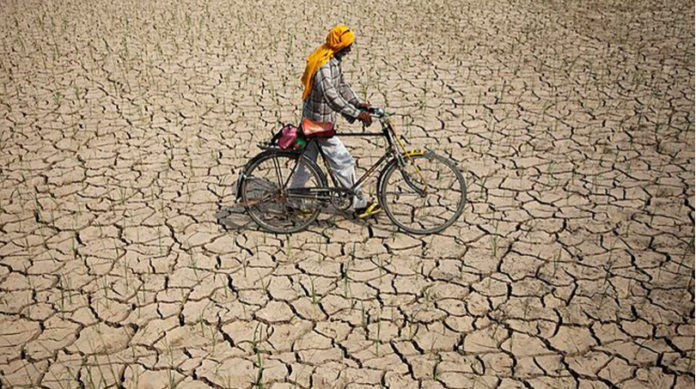The IMD has issued severe heat wave or heat wave warnings for parts of Odisha, Jharkhand, Telangana and Rayalaseema in Andhra Pradesh.
India will face severe heat wave conditions on Saturday, with the maximum temperature exceeding 47 degrees Celsius at Titlagarh in Odisha and above 45 degrees in several other parts of the country.
No relief from heat sight till April 27, as India Meteorological Department issued severe heat wave or heat wave warnings for parts of Odisha, Jharkhand, Telangana and Rayalaseema in Andhra Pradesh.
Vidarbha in Maharashtra, Bihar and the Gangetic West Bengal also recorded above normal temperatures.
Even minimum temperatures were above normal by 3.1 to 5 degrees Celsius at many places in east Madhya Pradesh and Rayalaseema, at a few places in Telangana, coastal Andhra Pradesh and Tamil Nadu and at isolated places in west Madhya Pradesh and the Gangetic West Bengal.
However, at a few places in Odisha, Telangana, Bihar and Jharkhand, the minimum temperature was above normal by only 1.6 to 3 degrees Celsius. The maximum temperature in Hyderabad was the highest in a decade on two days in April.
IMD declares a heat wave when the maximum temperature exceeds 40 degrees Celsius in the plains. If the normal maximum temperature of a place is less than or equal to 40 degrees Celsius, an increase by 5-6 degrees Celsius is needed for heat wave to be declared. If the temperature goes up 7 degrees Celsius above normal, it is considered a severe heat wave.
Election being going on different part of the country this heat wave condition is really a pain for the electoral to cast their vote and even for the officials it would be very difficult to manage.
Some important Tips:
Recognize the symptoms of heat exhaustion. Heat exhaustion is a serious condition and should be treated as soon as possible. There are a number of symptoms to look out for:
- Cool, clammy skin with “goose bumps”
- Heavy sweating
- Fatigue
- Light-headedness or dizziness
- Problems with physical coordination
- Muscle cramps
- Headache
- Nausea
Take steps to treat heat exhaustion. Take the person to a cool, shaded place, preferably indoors in air-conditioning. Give the person cool water or a sports drink to drink. Remove excess clothing. If possible, have the person take a cool shower or apply cool towels to the skin to help cool off.
- The person should start to feel better in about half an hour and experience no long-term effects.
- Without this treatment the person could develop heatstroke, which is much more serious.
- If the person shows no signs of improvement after 30 minutes, contact the doctor or emergency services, as the heat exhaustion may be progressing to heatstroke.
Identify and respond to heatstroke. Heatstroke occurs when body temperature becomes dangerously high and, no longer able to cool itself, the body begins to overheat. It is a much more serious condition than heat exhaustion, so it’s important to know the signs and know what to do. Call emergency services if you see the following signs, or if a person has been suffering from heat exhaustion for more than 30 minutes:
- High fever (104F/40C)
- Severe headache
- Light-headedness or dizziness
- Disorientation or confusion
- Irrational behavior
- Irritability or emotional instability
- Nausea or vomiting
- Muscle weakness and cramps
- Flushed or red skin
- Lack of sweating, dry skin
- Rapid heartbeat
- Rapid, shallow breathing
- Seizures
Take action while you wait for medical assistance. If a person near you has symptoms of heatstroke, the first thing you should do is call emergency services. While you wait for the ambulance, you can take the following steps:
- Move the person to a cool, shaded area
- Remove unnecessary clothing
- Increasing ventilation by using a fan or opening windows
- Giving the person water to drink, but not medication
- Shower or immerse their body with cool, but not cold, water that is 59-64°F (15-18°C)
- Cover the body with cool, damp sheets or towels
- Apply ice packs to the groin, armpits, neck, and back
Photo Credit:themillenniumreport.com
























